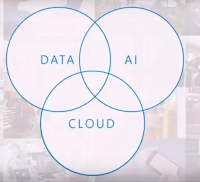I attended
the Institute for Mathematical Innovation (IMI) public lecture by Professor Andrew Blake, Research
Director at The Alan Turing Institute on 18 October. Professor Blake is a pioneer in the
development of algorithms that make it possible for computers to behave as
seeing machines. Before joining the Institute in 2015, Professor
Blake held the position of Microsoft Distinguished Scientist and Laboratory
Director at the Microsoft Research Lab in Cambridge, and he has been on the
faculty at Oxford University. He is a part of a new startup FiveAI.
The session abstract:
Neural networks have taken the world of
computing in general and artificial intelligence (AI) in particular by storm.
But in the future, AI will need to revisit these generative
models which are used to make predictions. There are several reasons for this –
system robustness, precision issues, transparency, and the high cost of
labelling data.
This is particularly true for perceptual AI, needed for
autonomous vehicles, where the need for simulators and the need to confront
novel situations, will demand further development of generative, probabilistic
models.
He talked about
the empirical detector and generative model. At the moment it is the era of deep
learning and neural networks, that sit within the empirical detector area. A black box area of big data and optimal predictive power. The generative
model is analysis by synthesis and comes with an ‘explanation’, like a model.
It starts with a hypothesis, typically
probabilistic. Professor Blake
believes the generative model will come back as perceptual models need this. This is
This was a very insightful lecture and very interesting
to see the mention of analysis by synthesis.
- to simulate labelled data
- for data fusion - to increase reliability
- to make detailed interpretations
- for online simulation - to explain hard to read situations












